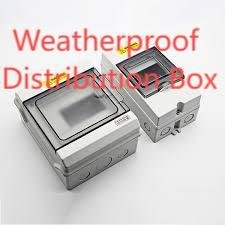Understanding Emergency Signs in Transportation Key Alerts to Watch For

When traveling on roads, railways, or even waterways, emergency signs play a pivotal role in ensuring your safety and that of others. These vital markers alert drivers, passengers, and operators about potential hazards, allowing them to take quick action in critical situations. Emergency signs and danger signs are especially designed to grab attention, communicate urgency, and indicate required precautions. Being familiar with these symbols and their meanings can significantly enhance safety on your journeys.
Transportation systems across the world utilize various emergency signs to minimize risks. Whether you're on the highway or in an airport, recognizing the right signs at the right time can prevent accidents, reduce panic, and even save lives. In this article, we'll explore the different types of emergency signs in transportation and highlight what to watch out for.
Types of Emergency Signs in Transportation
Transportation systems often use emergency signs in several distinct ways, each aimed at communicating critical information. These signs come in various formats such as visual symbols, text, or a combination of both. The two most common categories of these signs are warning signs and emergency alerts.
Warning Signs
Warning signs provide early notification of potential hazards. These signs are not always urgent but serve to prepare individuals for the dangers ahead. Common examples include road signs such as "Slippery When Wet" or "Uneven Road Surface." However, when discussing true emergency signs, these are usually urgent warnings that demand immediate attention.
Danger Signs
Danger signs, also referred to as dangerous goods markers, are essential in transportation, especially for cargo and freight handling. These danger signs are used to indicate the presence of hazardous materials, such as flammable chemicals, toxic substances, or explosives. Recognizing these signs promptly is crucial to avoid accidental exposure or accidents.
The Role of Emergency Signs in Road Transportation
In road transportation, emergency signs are primarily used to warn drivers of immediate dangers or obstacles on the road. For example, flashing lights or a road sign with a danger sign indicating roadworks or a car accident could alert drivers to reduce their speed or divert their route.
Common Emergency Signs on Roads
-
Flashing Warning Lights: These often indicate an accident, construction zone, or another event where vehicles need to slow down or avoid the area.
-
Stop Signs or Yield Signs: These are essential signs that regulate traffic flow, preventing accidents when intersections are dangerous.
-
Hazardous Material Signs: Found on trucks and transport vehicles, these signs provide critical information regarding the goods being transported.
Drivers should always adhere to these signs, understanding that failure to do so can lead to severe consequences, especially when danger signs or emergency alerts are involved.
Emergency Signs in Rail Transport
Emergency signs are also prevalent in rail transport, where safety is equally critical. These signs are displayed at stations, on trains, and along tracks to guide passengers in case of an emergency or natural disaster. Train stations use emergency exit signs, fire alarm instructions, and evacuation routes to help passengers evacuate swiftly.
Key Emergency Signs in Rail Transport
-
Evacuation Signs: Clear signage directs passengers to emergency exits, often with illuminated signs in case of low visibility.
-
Fire Alarm Indicators: The fire alarm system is an integral part of the safety protocol within railway stations and onboard trains.
-
Emergency Stop Signals: These signals ensure that the train stops immediately if a life-threatening hazard is detected.
In rail systems, danger signs are also used to notify passengers of potential risks like a stalled train, track obstructions, or other sudden emergencies.
Air Travel and Emergency Signage
In aviation, emergency signs and warnings are an integral part of the aircraft's safety protocols. The aircraft itself features numerous emergency indicators, including exit signs, fire hazard alerts, and life-preserver indicators. The absence of proper signage in an emergency situation can escalate panic and confusion.
Emergency Indicators in Aircraft
-
Exit Row Signs: These mark the nearest exits and serve as vital points of reference during evacuations.
-
Oxygen Mask Signals: Lights indicating the drop of oxygen masks in case of depressurization are crucial for survival.
-
Seatbelt Signs: An essential sign to ensure passengers remain secure, especially in turbulent weather conditions.
Clear, highly visible danger signs are essential for maintaining order and safety within the cabin.
How to React to Emergency and Danger Signs
Understanding emergency signs is just one part of the equation; knowing how to react when you see these signs is just as important. Here are some basic guidelines:
-
Stay Calm and Focused: Whether you're driving, traveling by train, or on a plane, maintaining calm is key to handling an emergency effectively.
-
Follow Instructions: Always follow the guidance provided by emergency signs, and listen to safety announcements.
-
Know the Emergency Routes: Familiarize yourself with emergency exit signs and evacuation routes in places like airports, trains, and buses.
Conclusion: The Importance of Being Prepared
Emergencies can occur at any time, and transportation systems, whether on the road, rail, or in the air, are designed with emergency signs to help us respond effectively to such situations. Danger sign and emergency alerts help travelers remain aware of potential risks and act accordingly. By understanding these crucial markers, you can stay safer, reduce the likelihood of accidents, and help others in emergency situations.
Next time you travel, take a moment to familiarize yourself with the various emergency signs around you. It could make all the difference in an unexpected situation.







